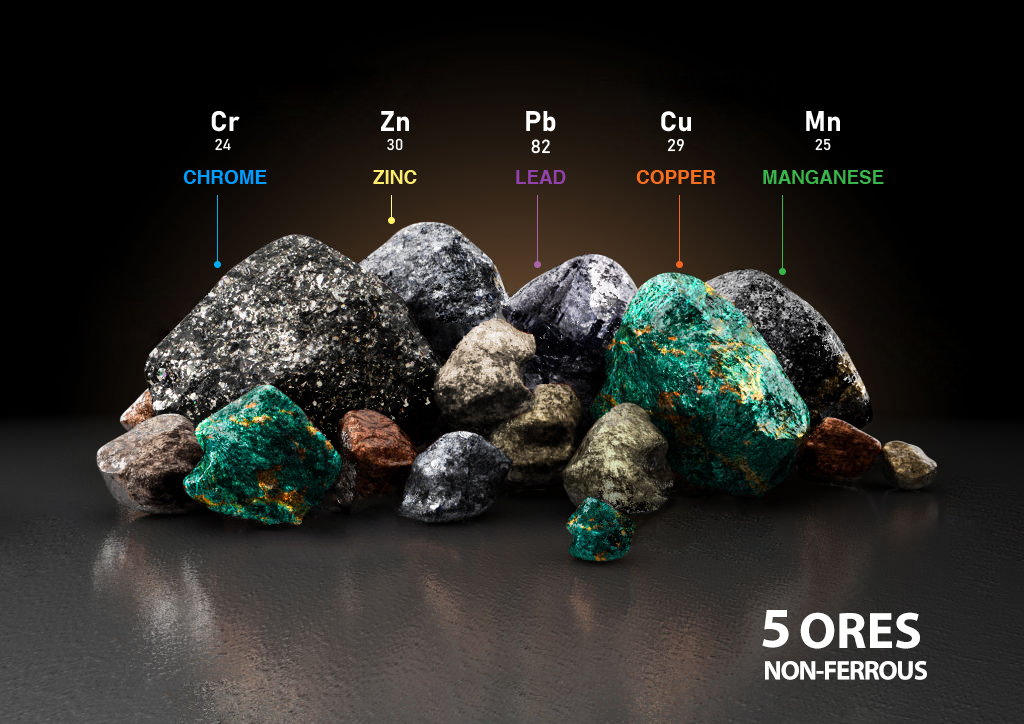
CHROME ORE Chromite is an oxide mineral composed of chromium, iron, and oxygen (FeCr2O4). MANGANESE ORE The most important of these minerals is pyrolusite, the main ore mineral for manganese. COPPER ORE Copper occurs in three different mineral groups (see table 1-5). In sulfide mineral deposits, the copper is linked with sulfur. ZINC ORE %95 of zinc is mined from sulfide deposits, and mixed with the sulfides of copper, lead and iron. LEAD ORE It is rare to find pure deposits of lead in nature though. The majority of the deposits are mixtures of minerals, hence lead ore is usually obtained as a byproduct of other metal mining such as zinc, silver or copper.
CHROME ORE
Chromite is an oxide mineral composed of chromium, iron, and oxygen (FeCr2O4). It is dark grey to black in colour with a metallic to submetallic luster and high specific gravity.
MANGANESE ORE
The most important of these minerals is pyrolusite, the main ore mineral for manganese. Manganese is essential to iron and steel production.
COPPER ORE
Copper occurs in three different mineral groups (see table 1-5). In sulfide mineral deposits, the copper is linked with sulfur. In carbonate deposits, the copper occurs with carbon and oxygen. In silicate mineral deposits, the copper is linked with silicon and oxygen. The latter two groups are also termed oxide ores. Copper is more easily extracted from the sulfide and carbonate minerals. Copper ores occur as sulfide ores or oxide ores in nature. Most copper ores contain only a small percentage of Cu.
ZINC ORE
%95 of zinc is mined from sulfide deposits and mixed with the sulfides of copper, lead and iron. People knew to use Zn ores to make brass even in ancient times. Zinc concentrate, as a semi-processed intermediate product used in the production of zinc metal and zinc alloys, is the result of a flotation process for zinc ores. Zinc ores with less than %15 zinc can be concentrated to around %55 Zn and %30 S, as well as low levels of some other elements.
LEAD ORE
It is rare to find pure deposits of lead in nature though. The majority of the deposits are mixtures of minerals, hence lead ore is usually obtained as a byproduct of other metal mining such as zinc, silver or copper. In fact, lead ore is a main source of silver and contributes substantially towards the world›s total output. The most common lead ore is galena (PbS), which contains %86.6 lead. Other common varieties include cerussite (PbCO3) and angel site (PbSO4).
